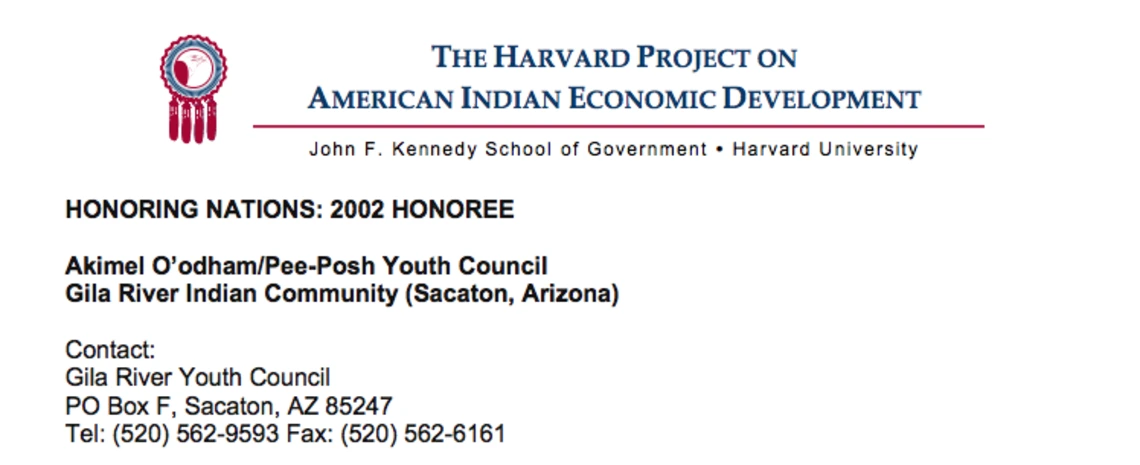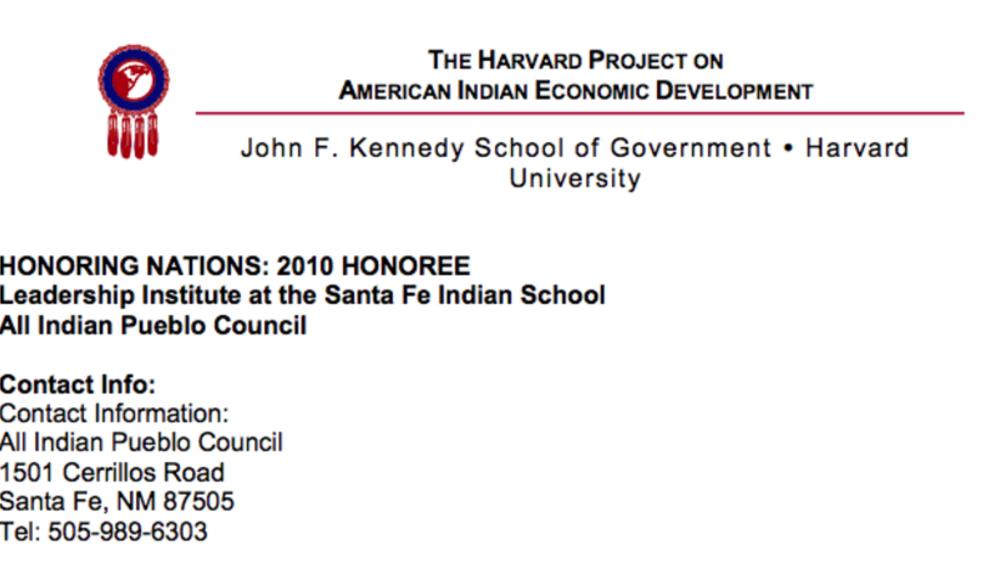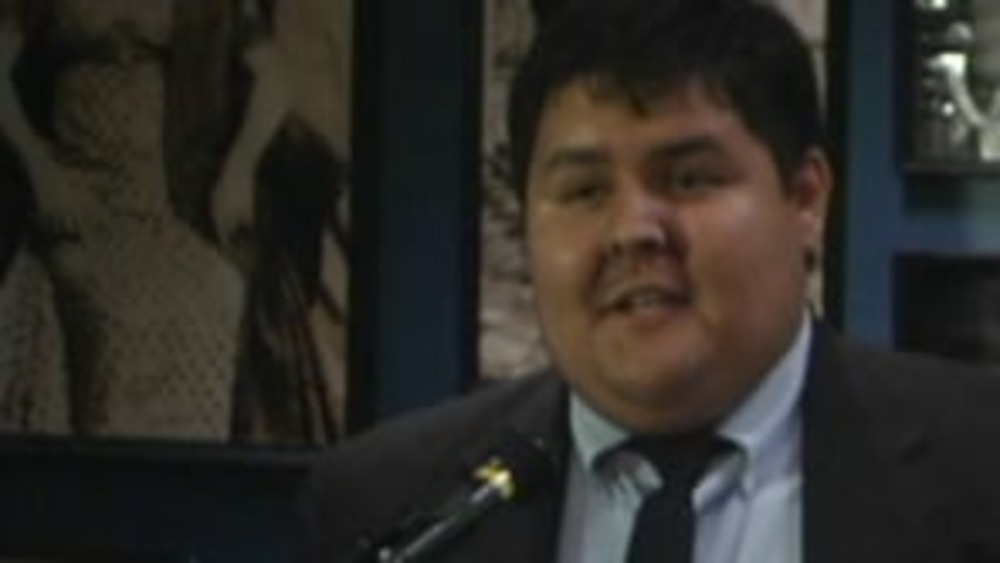Recognizing that their youth possess critical insight on a full range of governing issues, tribal leaders chartered the Akimel O’odham/Pee-Posh Youth Council in 1988 to give youth a formal voice within the tribal government. The Council is comprised of 20 youth between the ages of 14-21, who are elected by their peers to serve two-year (staggered) terms. After receiving training in communication, team building, ethics, conflict resolution, and parliamentary procedures, Youth Council members present youth issues to the tribal government, oversee various community projects, and attend local, state, and national meetings. Youth Council members have testified before the US Senate on numerous occasions, and the Council produces a continual stream of community and national leaders.
Additional Information
"Akimel O'odham/Pee-Posh Youth Council." Honoring Nations: 2002 Honoree. Harvard Project on American Indian Economic Development, John F. Kennedy School of Government, Harvard University. Cambridge, Massachusetts. 2003. Report.



